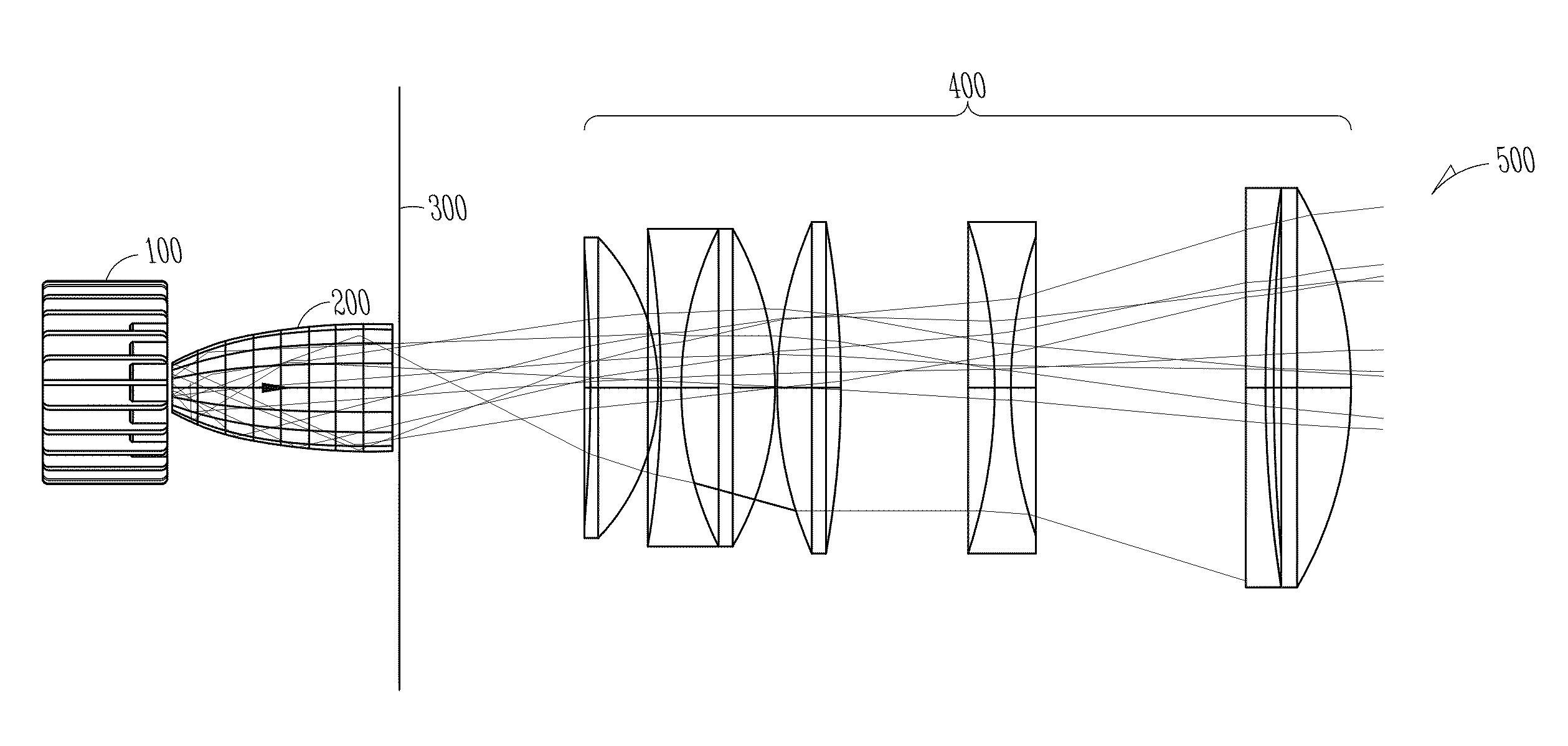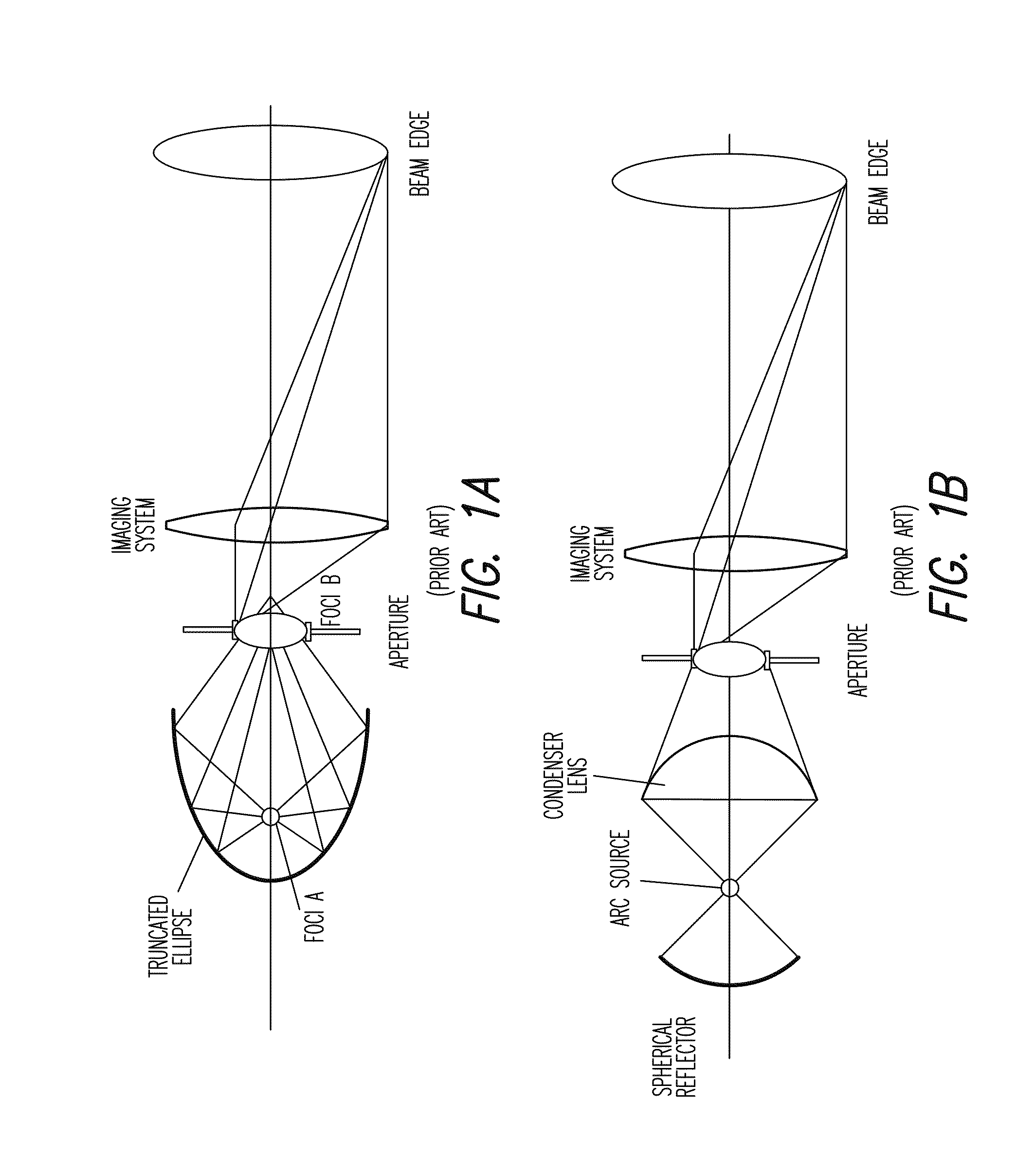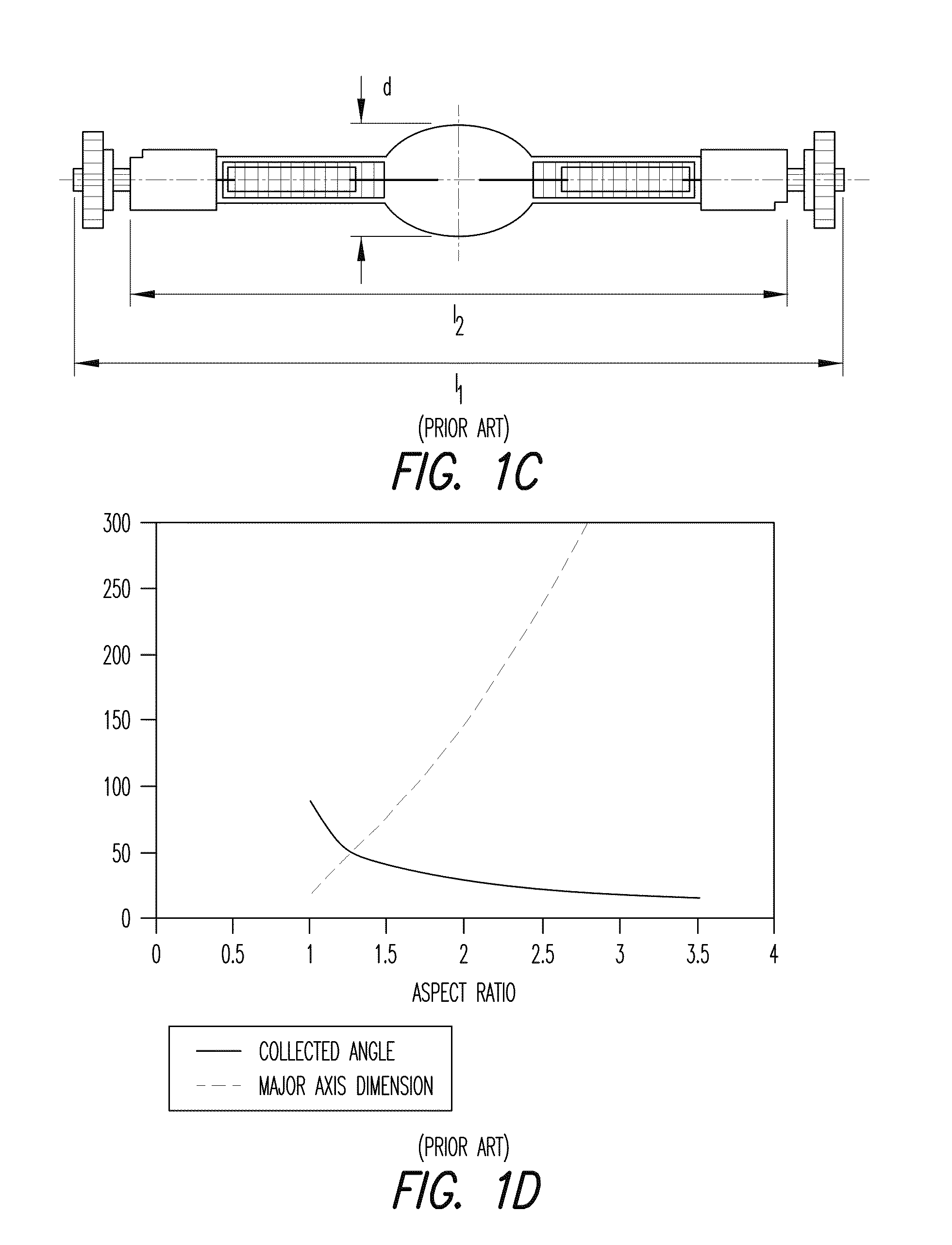Beam projection systems and methods
a beam projection and beam technology, applied in the field of beam projection systems and methods, can solve the problems of loss of efficiency, increased lens size, and small object size,
- Summary
- Abstract
- Description
- Claims
- Application Information
AI Technical Summary
Benefits of technology
Problems solved by technology
Method used
Image
Examples
Embodiment Construction
[0071]While the present invention is open to various modifications and alternative constructions, the embodiments shown in the drawings are described herein as example embodiments.
[0072]With reference to FIG. 2, a schematic layout of an example embodiment is shown to include a directional light source 100, a non-imaging optic 200 (also referred to herein as a NIO or non-imaging optical element), an aperture 300, an imaging lens 400, and a resulting projected beam 500. FIG. 3A is a cross-section and schematic view of a directional light source 150 according to another example embodiment. In a specific example embodiment, the directional light source may be the directional light source 100 of FIG. 2. In other example embodiments, the directional light source 150 may be used in the schematic layout shown in FIG. 2 or in any of the other beam projection and optical systems and layouts described herein. In the example of FIG. 3A, the directional light source may have a lamp body 102 form...
PUM
 Login to View More
Login to View More Abstract
Description
Claims
Application Information
 Login to View More
Login to View More - R&D
- Intellectual Property
- Life Sciences
- Materials
- Tech Scout
- Unparalleled Data Quality
- Higher Quality Content
- 60% Fewer Hallucinations
Browse by: Latest US Patents, China's latest patents, Technical Efficacy Thesaurus, Application Domain, Technology Topic, Popular Technical Reports.
© 2025 PatSnap. All rights reserved.Legal|Privacy policy|Modern Slavery Act Transparency Statement|Sitemap|About US| Contact US: help@patsnap.com



